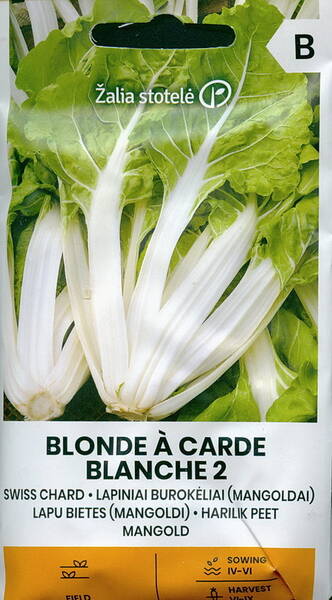Mid-early variety with erect large dark green leaves with a wide white petiole.
Ripens on the 55th day after transplanting. Undemanding to the soil, resistant to frost.
Harvesting can be carried out until late autumn.
1 gram = 40-55 seeds.
* The harvest of leaf chard is harvested, as a rule: eight weeks after sowing the seeds.
Chard leaves are rich in vitamins and tasty.
Remove young leaves 10-15 cm high, as old overgrown leaves are bitter. Trim or trim the outer leaves of the rosette, being careful not to damage the petioles of the plant. It is also impossible to leave too large "stumps" of petioles at the base, as the rest of the petioles will begin to rot.
Feed your plants with compost after harvest and water them generously to provide them with the nutrients they need to grow.
Use chard leaves as soon as possible as food, as the amount of nutrients in them decreases during storage.
Young leaves resemble spinach leaves in their appearance and taste: they are added to salads, borscht, cabbage soup and soups, and served as a side dish to meat, fish and poultry dishes.
Chard can overwinter in the soil, as it tolerates light to medium frosts. To protect against severe frosts, plants are covered with leaves, spruce branches or straw after harvesting the last crop.
Since April, the covering material has been removed. If, after that, the chard is covered with a film, then soon young leaves will form on the plants, which will make it possible to get a crop of leaf chard two to three weeks earlier than usual.
Eng.: Spinach Beet. Bot. syn.: Beta vulgaris var. vulgaris.
Chard is one of the leaders among vegetable crops in terms of the content of antioxidants and minerals that protect the body from a range of diseases and early ageing.
Its leaves are suitable for fresh consumption in salads and side dishes. After boiling, steaming and freezing, the taste becomes sweeter, and the valuable properties are not lost.












